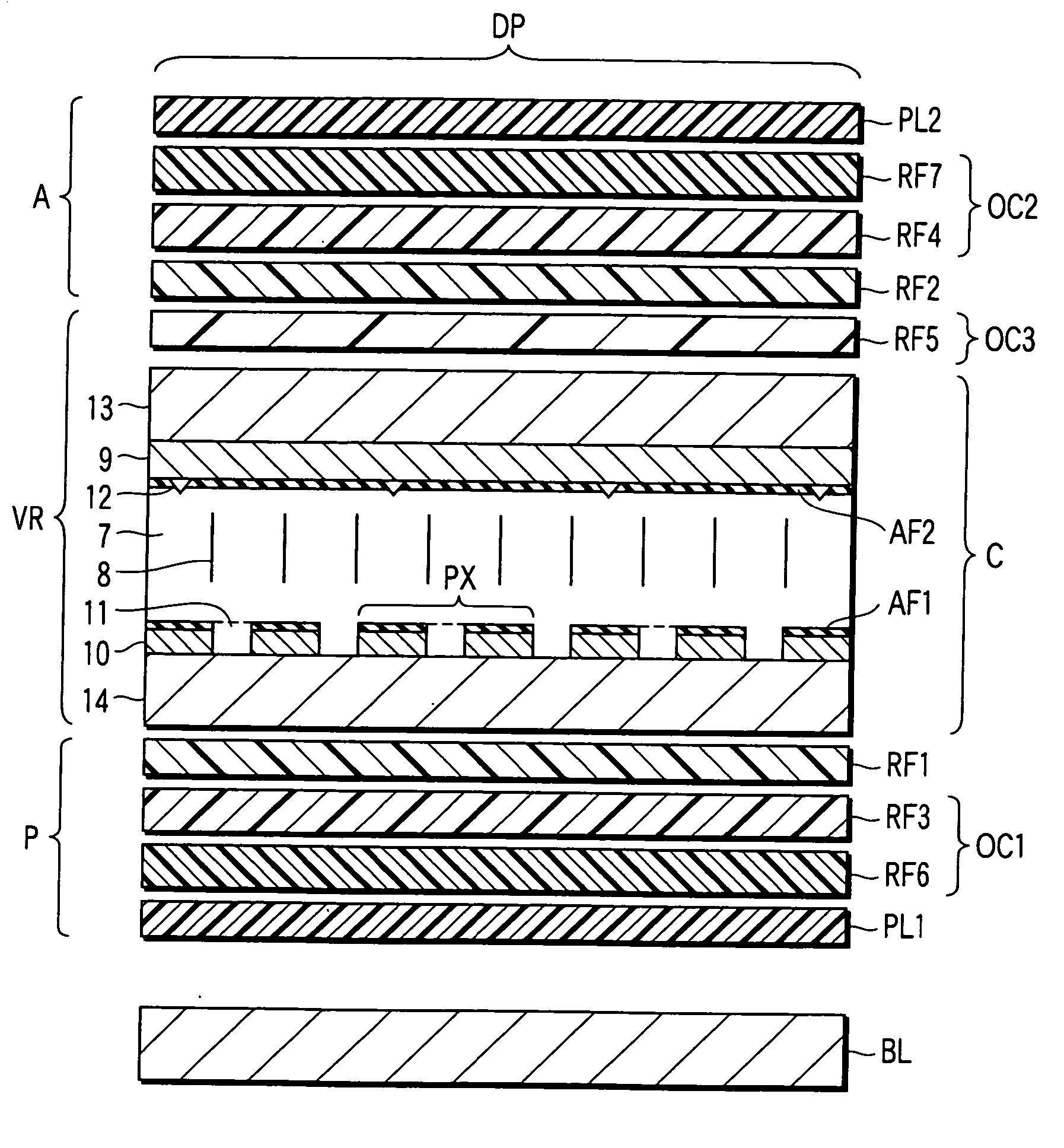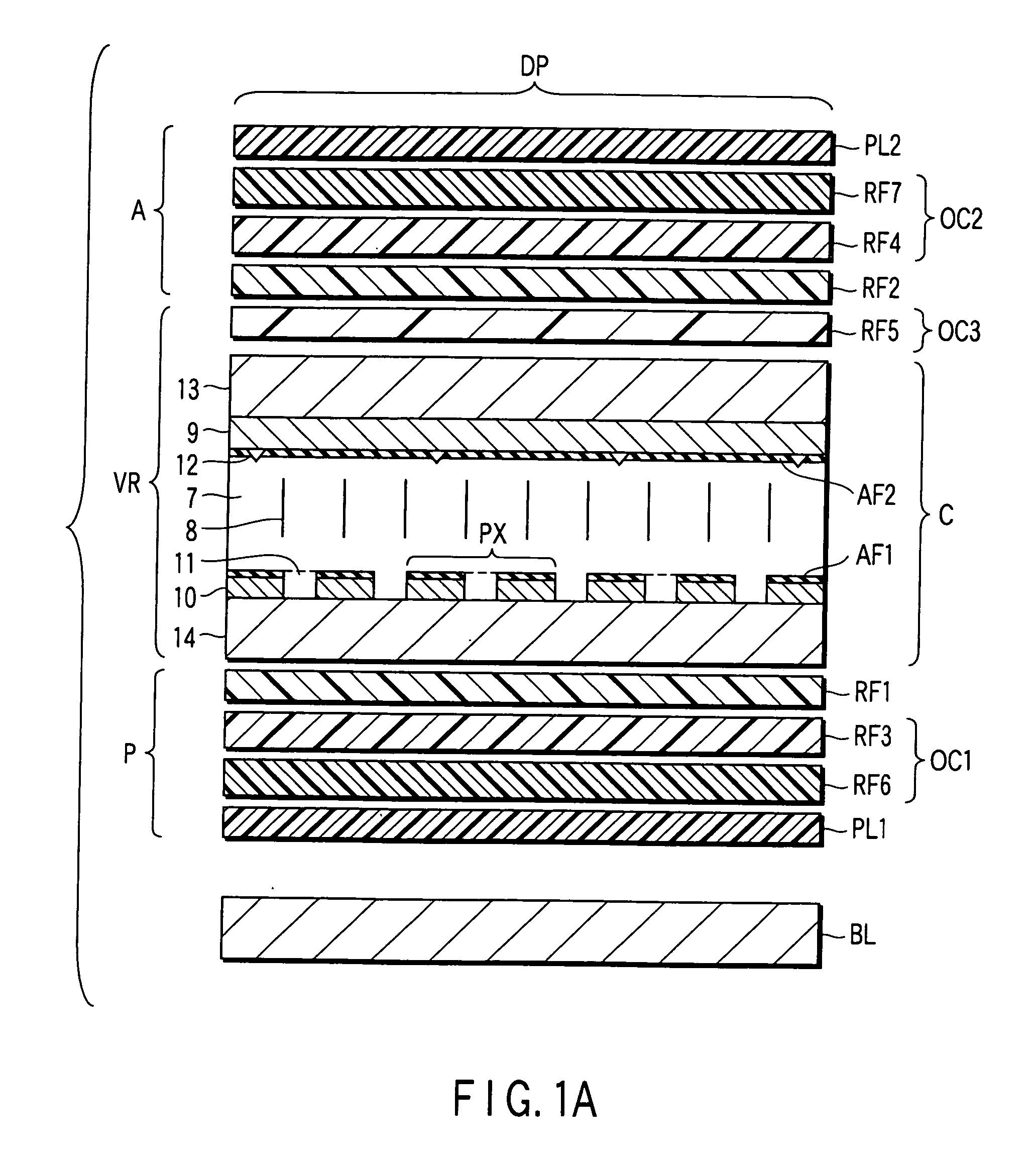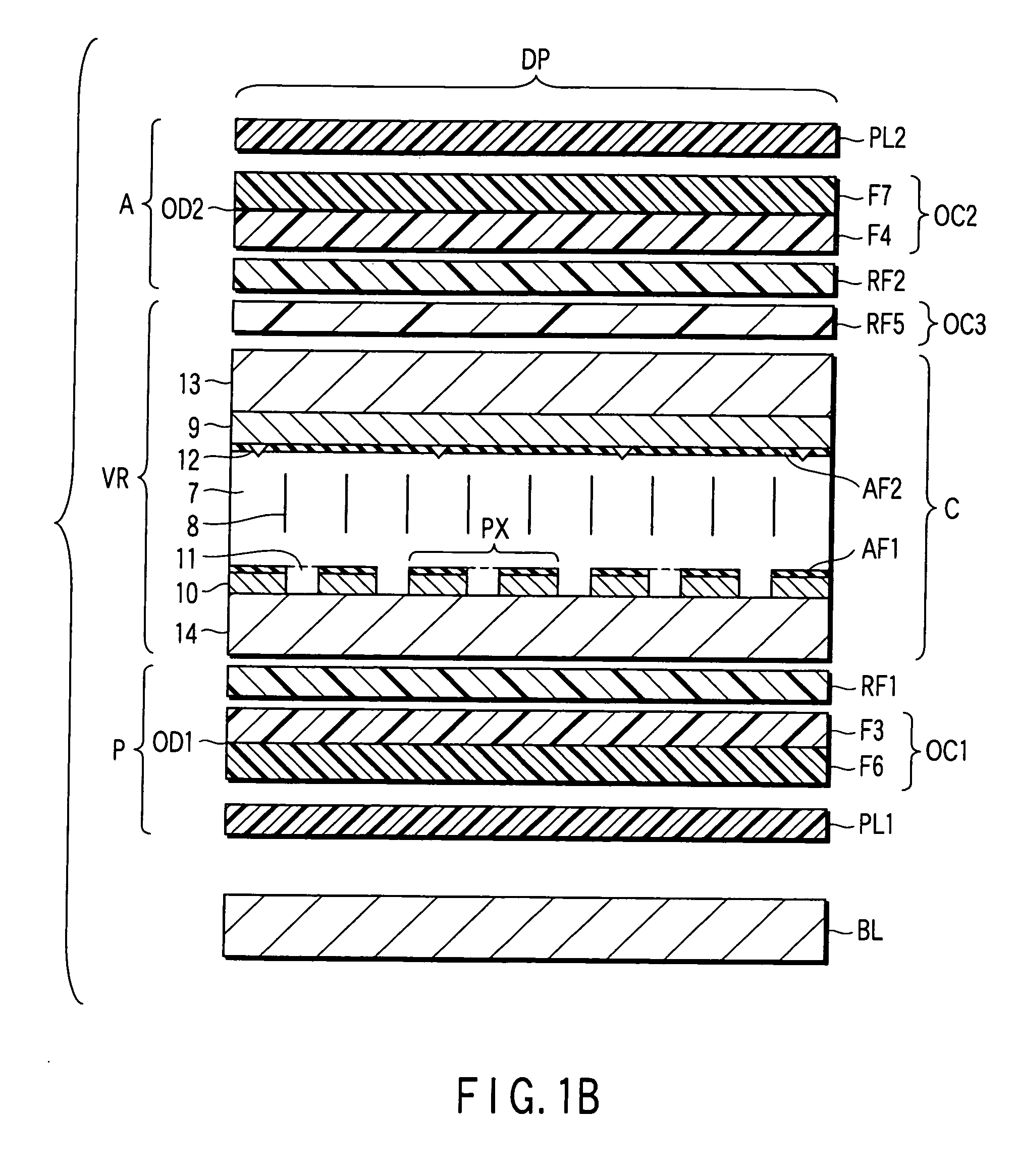Liquid crystal display device
a liquid crystal display and display device technology, applied in non-linear optics, instruments, optics, etc., can solve the problems of narrow viewing angle characteristic range and reduced transmittance, and achieve the effect of reducing cost and improving viewing angle characteristics
- Summary
- Abstract
- Description
- Claims
- Application Information
AI Technical Summary
Benefits of technology
Problems solved by technology
Method used
Image
Examples
embodiment 1
[0100] In a liquid crystal display device according to Embodiment 1, an F-based liquid crystal (manufactured by Merck Ltd.) was used as a nematic liquid crystal material with negative dielectric anisotropy for the liquid crystal layer 7. The refractive index anisotropy Δn of the liquid crystal material used in this case is 0.095 (wavelength for measurement=550 nm; in the description below, all refractive indices and phase differences of retardation plates are values measured at wavelength of 550 nm), and the thickness d of the liquid crystal layer 7 is 3.5 μm. Thus, the Δn·d of the liquid crystal layer 7 is 330 nm.
[0101] In Embodiment 1, a uniaxial ¼ wavelength plate (in-plane phase difference=140 nm), which is formed of ZEONOR resin (manufactured by Nippon Zeon Co., Ltd.), is used as the first retardation plate RF1 and second retardation plate RF2. An alignment film, which is formed of JALS214-R14 (manufactured by JSR), is provided on the surface (opposed to the polarizer plate) o...
embodiment 2
[0108] The structure of a liquid crystal display device according to Embodiment 2 is the same as the structure of the liquid crystal display device according to Embodiment 1, except that the fifth retardation plate RF5 is composed of two segments, as shown in FIG. 1C.
[0109] Specifically, in Embodiment 2, a liquid crystal polymer layer, which functions as the third retardation plate RF3, is formed on the surface (opposed to the polarizer plate) of the film used as the first retardation plate RF1. On the other hand, the back surface (opposed to the liquid crystal cell C) of the film that is used as the first retardation plate RF1 is rubbed, and the rubbed surface is coated with an ultraviolet cross-linking chiral nematic liquid crystal (manufactured by Merck Ltd.) with a thickness of 1.18 μm, which has a refractive index anisotropy Δn of 0.102 and a helical pitch of 0.9 μm. The coated liquid crystal polymer layer is irradiated with ultraviolet in the state in which the helical axis a...
embodiment 3
[0114] In a liquid crystal display device according to Embodiment 3, an F-based liquid crystal (manufactured by Merck Ltd.) was used as a nematic liquid crystal material with negative dielectric anisotropy for the liquid crystal layer 7. The refractive index anisotropy Δn of the liquid crystal material used in this case is 0.095 (wavelength for measurement=550 nm; in the description below, all refractive indices and phase differences of retardation plates are values measured at wavelength of 550 nm), and the thickness d of the liquid crystal layer 7 is 3.5 μm. Thus, the Δn·d of the liquid crystal layer 7 is 330 nm.
[0115] In Embodiment 3, a uniaxial ¼ wavelength plate (in-plane phase difference=140 nm), which is formed of ZEONOR resin (manufactured by Nippon Zeon Co., Ltd.), is used as the first retardation plate RF1 and second retardation plate RF2. A vertical alignment film, which is formed of JALS214-R14 (manufactured by JSR), is provided on the surface (opposed to the polarizer ...
PUM
| Property | Measurement | Unit |
|---|---|---|
| ¼ wavelength | aaaaa | aaaaa |
| thickness | aaaaa | aaaaa |
| thickness | aaaaa | aaaaa |
Abstract
Description
Claims
Application Information
 Login to View More
Login to View More - R&D
- Intellectual Property
- Life Sciences
- Materials
- Tech Scout
- Unparalleled Data Quality
- Higher Quality Content
- 60% Fewer Hallucinations
Browse by: Latest US Patents, China's latest patents, Technical Efficacy Thesaurus, Application Domain, Technology Topic, Popular Technical Reports.
© 2025 PatSnap. All rights reserved.Legal|Privacy policy|Modern Slavery Act Transparency Statement|Sitemap|About US| Contact US: help@patsnap.com



